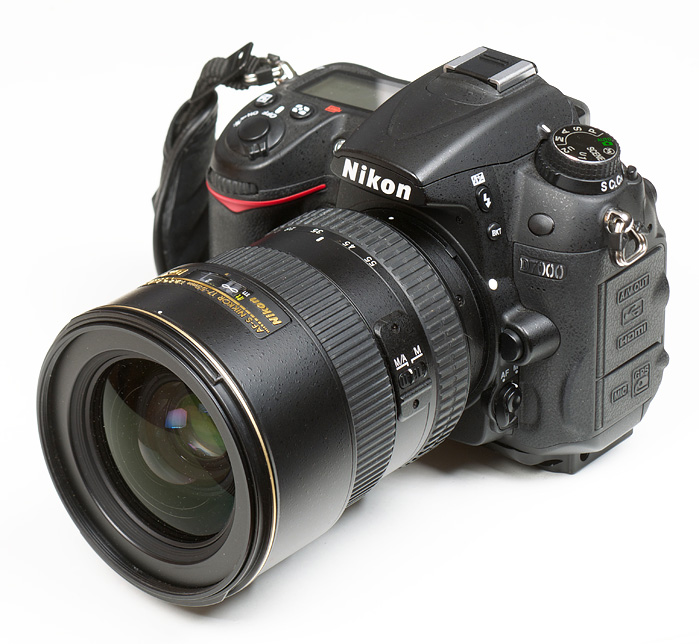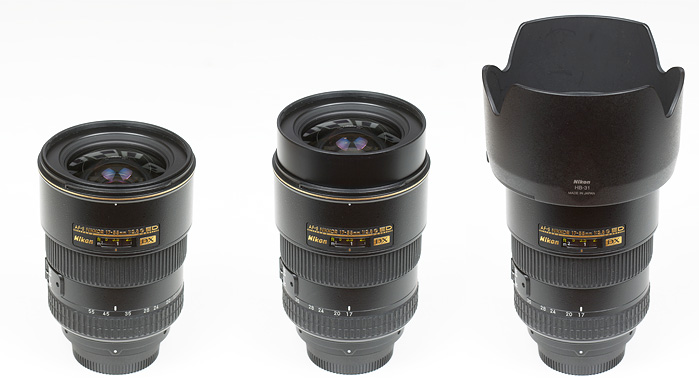|
Nikkor AF-S DX 17-55mm f/2.8 G IF-ED - Review / Test Report |
|
Lens Reviews -
Nikon / Nikkor (APS-C)
|
|
Page 1 of 3
 Review by Klaus Schroiff and Markus Stamm, published December 2012
Review by Klaus Schroiff and Markus Stamm, published December 2012
Introduction
The Nikkor AF-S 17-55mm f/2.8 G IF-ED DX is a gold ring lens indicating a professional grade Nikon lens for F-mount DSLRs. It is a designated DX lens with a reduced image circle - a rare combination of properties. Not many manufacturers offer high-end dedicated crop lenses. The reason behind this is quite simple: when the lens was introduced in 2003, Nikon offered one sensor size only in both consumer and professional DSLRs. To make their digital high-end cameras attractive to professional users, they also needed to offer high-end glass.
The field-of-view of the lens is equivalent to 26-85mm so it covers a little more range compared to the classic 28-70mm standard zooms, but also offers a little less picture angle than the 24-70mm zooms that have become popular since the AF-S DX 17-55 was introduced.
We actually tested the lens a couple of years ago on the D200, but since the lens is still part of Nikon's portfolio we will have another look at how the lens performs on our current DX test camera, the Nikon D7000.
 The AF-S 17-55mm has a price tag a little beyond the 1200EUR/1400US$ barrier but upon first contact it is pretty obvious that you also get some value for your money - the build quality of the lens is superb. The lens body is made of metal and there's rubber sealing to protect it against dust and humidity. The focus ring operates pretty smoothly whereas the zoom ring is slightly on the stiff side but it is also well damped.
The AF-S 17-55mm has a price tag a little beyond the 1200EUR/1400US$ barrier but upon first contact it is pretty obvious that you also get some value for your money - the build quality of the lens is superb. The lens body is made of metal and there's rubber sealing to protect it against dust and humidity. The focus ring operates pretty smoothly whereas the zoom ring is slightly on the stiff side but it is also well damped.
The lens extends slightly at the extreme ends of the zoom range - more so towards the wide end as you may notice in the product images below. While this design may appear a little unusual (though not unprecedented) it
has obviously advantages regarding the lens hood which can be deeper and therefore more effective. Thanks to an IF (internal focusing) design the front element does not rotate, so using a polarizer is no problem.
 Typical for all G lenses, the Nikkor does not provide a dedicated aperture ring anymore. Like most modern Nikkors it features a silent-wave (ultrasonic) AF motor providing very fast and near-silent AF operations.
Typical for all G lenses, the Nikkor does not provide a dedicated aperture ring anymore. Like most modern Nikkors it features a silent-wave (ultrasonic) AF motor providing very fast and near-silent AF operations.
| Specifications |
|---|
| Equiv. focal length | 25.5-82.5 mm (full format equivalent) |
| Equiv. aperture | f/4.2 (full format equivalent, in terms of depth-of-field) |
| Optical construction | 14 elements in 10 groups inc. 3 ED and 3 aspherical glass elements |
| Number of aperture blades | 9 (rounded) |
| min. focus distance | 0.36 m @ 35 mm (max. magnification ratio 1:5) |
| Dimensions | 86 x 111 mm |
| Weight | 755 g |
| Filter size | 77 mm (non-rotating) |
| Hood | Nikon HB-31 (supplied), petal-shaped |
| Other features | Lens provides distance (D) information to the camera. Sealing. |
|